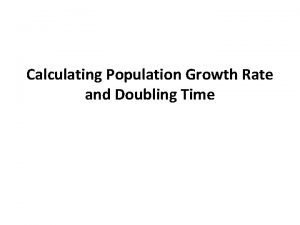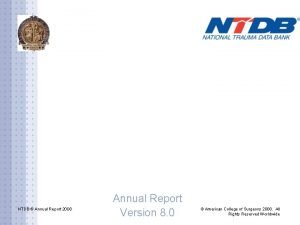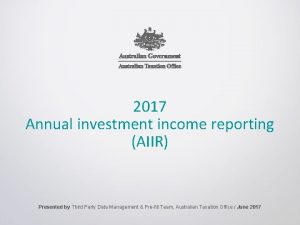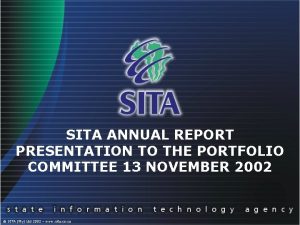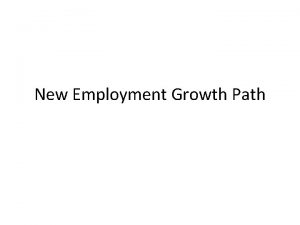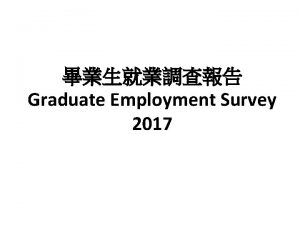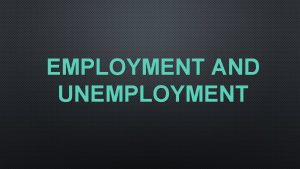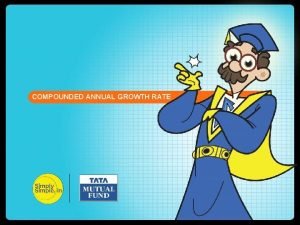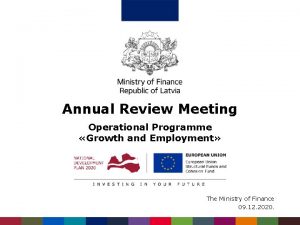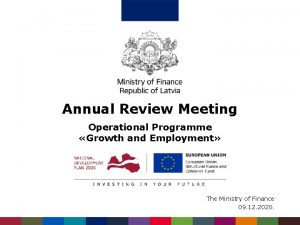Annual Growth Survey and Draft Joint Employment Report















- Slides: 15

Annual Growth Survey and Draft Joint Employment Report 2012

2 nd European Semester: overall context (I) • Economic recovery has come to a standstill • GDP likely to stagnate (0. 6% for 2012). • Unemployment levels likely to remain high (10% in 2012) • Difficulties with the sovereign debt and financial sector

2 nd European Semester: overall context (II) • To be implemented as part of strengthened economic governance • Member States’ progress in implementing recommendations is below expectations • Priority on implementation of agreed reforms and growth-enhancing measures • Focus on both reforms with short-term growth effect and longer-term perspective

Progress on Europe 2020 headline targets (I) EMPLOYMENT 75% of the population aged 20 -64 should be employed INNOVATION 3% of the EU's GDP should be invested in R&D CLIMATE / ENERGY A reduction of CO 2 emissions by 20% Share of renewable energies up to 20% An increase in energy efficiency by 20% EDUCATION The share of early school leavers should be under 10% At least 40% of the younger generation should have a tertiary degree or diploma POVERTY 20 million fewer people at risk of poverty

Structure of the 2012 Annual Growth Survey AGS Europe 2020 Progress Report Macroeconomic Report Joint Employment Report on tax coordination

2 nd AGS: five priorities • Pursuing fiscal consolidation • Restoring normal lending to the economy • Promoting growth for today and tomorrow • Tackling unemployment and the social consequences of the crisis • Modernising public administration

2 nd AGS: fiscal consolidation • Maintaining effective growth-friendly expenditure (including education, reinforcement of employment services and active labour market and social inclusion policies) • Building more effective, efficient and fairer tax systems (including shifting taxation away from labour towards taxation less detrimental to growth and attention to vulnerable groups) • Encourage moves from undeclared to regular work • Pursuing the modernisation of pension systems to ensure financial sustainability and adequacy and equalizing pensionable page • Aligning the retirement age with increasing life expectancy with a view to raising the effective exit age from the labour market • Restricting access to early retirement schemes and supporting longer working lives

2 nd AGS: tackling unemployment and the social consequences of the crisis (I) 3 priorities: • Mobilising labour for growth • Supporting employment especially of young people • Protecting the vulnerable

2 nd AGS: tackling unemployment and the social consequences of the crisis (II) Mobilising labour for growth – Review wage-setting mechanism – Adaptation of UB combined with activation – Enhance labour mobility – Restrict early retirement access and supporting longer working lives – Promote self-employment and entrepreneurship – Facilitate high employment growth sectors

2 nd AGS: tackling unemployment and the social consequences of the crisis (III) Supporting employment especially of young people – Most urgent needs and actions to support NEET – Targeting young people: apprenticeships, traineeships – Reform employment protection legislation, generate easier access for youth – Education and training to better reflect skills demand – Review quality and funding of universities

2 nd AGS: tackling unemployment and the social consequences of the crisis (IV) Protecting the vulnerable – Further improving the effectiveness of social protection systems – Implementing active inclusion policies – Ensuring access to services to support integration to the labour market

Joint Employment Report: context • JER underpins and expands on the key messages contained in the AGS • Key-messages based on – – – Quarterly reviews –Employment and social situation in the EU Country examination of the National Reform Programmes Implementation of the country-specific recommendations Thematic surveillance report Key issues paper

Joint Employment Report: labour market and social trends • Slow employment recovery: gains do not offset losses • Employment increase mainly temporary and part-time jobs. • Emerging mismatches: jobseekers unable to match with growing vacancies • Tax wedge and non-wage labour costs high on low skilled • Situation of young people has worsened • Long-term and low-skilled unemployment on the rise • Social safety nets under stress

Joint Employment Report: priorities for the future • Stepping up job-creating capacity • Implementing comprehensive frameworks to tackle youth unemployment in line with the Youth Guarantee • Putting in place effective active labour market policies to maintain employability and put people back to work • Protecting the most vulnerable groups and those most hardly hit by the crisis including through more effective social protection systems, active inclusion strategies and smart consolidation • Investing in education and training

The European Semester: who does what and when? EUROPE 2020
 Objective of draw frame
Objective of draw frame John louis von neumann
John louis von neumann Monthly wholesale trade survey
Monthly wholesale trade survey Annual eps growth
Annual eps growth Total fertility rate
Total fertility rate Rule of 70
Rule of 70 What is plant growth analysis
What is plant growth analysis Monocots eudicots
Monocots eudicots Primary growth and secondary growth in plants
Primary growth and secondary growth in plants Chapter 35 plant structure growth and development
Chapter 35 plant structure growth and development National trauma data bank annual report 2020
National trauma data bank annual report 2020 Compal electronics inc annual report
Compal electronics inc annual report Aiir ato
Aiir ato Sita annual report
Sita annual report Sen annual review report example
Sen annual review report example Cic annual report 2019
Cic annual report 2019





